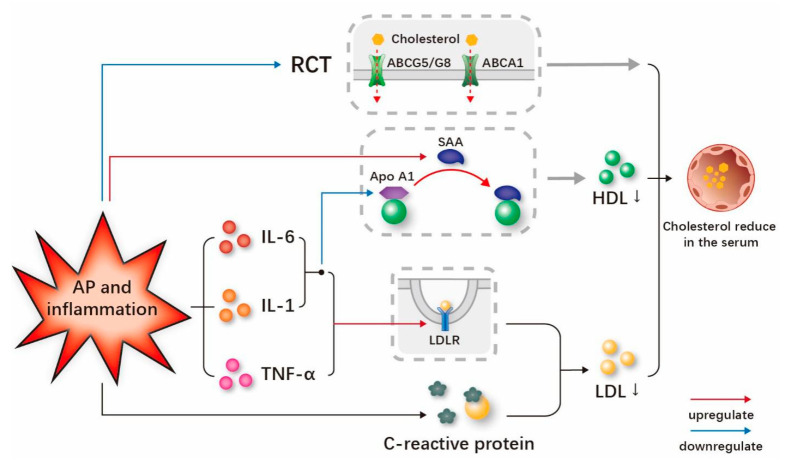Figure 5.
Mechanisms of serum cholesterol reduction caused by persistent inflammation and AP. In the process of persistent inflammation and AP, the release of IL-1, IL-6 and TNF-α increases the expression and activity of LDL-C receptors and leads a decreased LDL-C level. C-reactive protein, a marker of inflammation, also combines with LDL-C to form a complex that can be rapidly degraded to lower LDL-C levels. The excessive release of IL-1 and IL-6 also decreases the serum level of Apo A1. With the decrease in the Apo A1 level, the SAA level increases, and SAA replaces Apo A1 as the main lipid in HDL-C. This change in HDL-C speeds up the clearance of HDL-C from the circulation and leads to a decrease in HDL-C levels. RCT is also damaged in the process of inflammation and AP, and the decreased expression of ABCA1, ABCG5 and ABCG8 mRNA blocks the efflux of cholesterol, which is also one of the mechanisms of the decrease in the serum cholesterol level. Abbreviations: IL-6, interleukin-6; IL-1, interleukin-1; TNF-α, tumor necrosis factor-α; HDL-C, high-density lipoprotein cholesterol; LDL, low-density lipoprotein cholesterol; SAA, serum amyloid.

